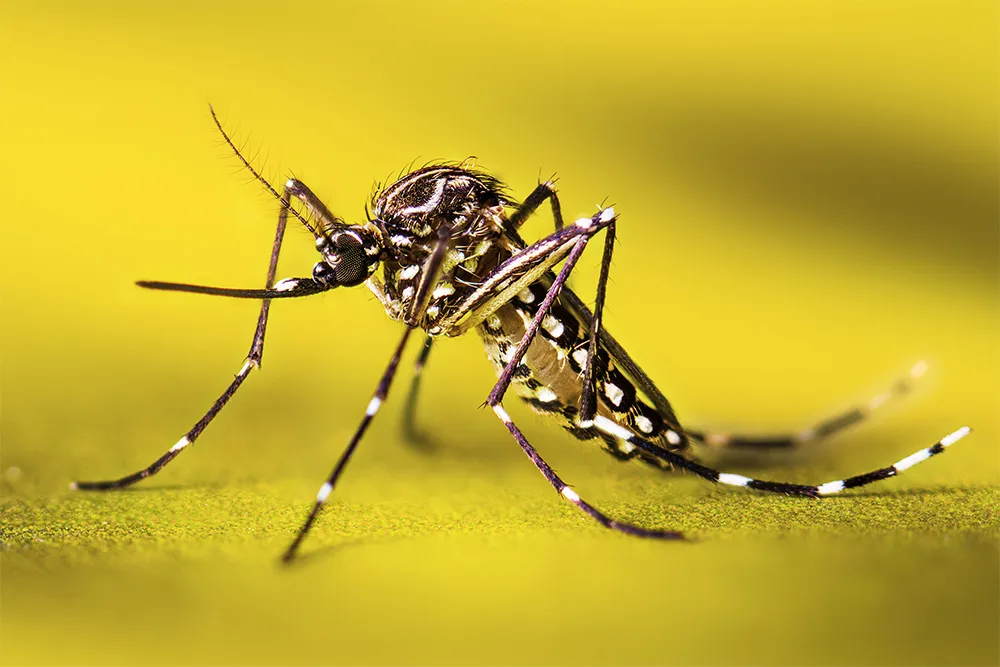Chikungunya Virus in China: Essential Safety Guide for Travelers
China is experiencing its largest chikungunya outbreak in recorded history, with over 8,000 confirmed cases concentrated in Guangdong Province since June 2025. The outbreak has prompted the Centers for Disease Control and Prevention to issue a Level 2 travel advisory, urging travelers to “practice enhanced precautions” when visiting affected areas. We’ve been closely monitoring this developing situation to provide you with the most current information and practical guidance for your China travel plans.
The outbreak represents a significant shift in China’s disease landscape. Previously, chikungunya cases in the region were sporadic and typically linked to imported infections. However, the current situation involves sustained local transmission, meaning mosquitoes within China are actively spreading the virus from person to person. This development has caught both local health authorities and international travel medicine experts by surprise, as the scale exceeds previous projections for chikungunya spread in temperate regions of Asia.
Table of Contents
Understanding the Current Chikungunya Outbreak in China
The chikungunya outbreak in Guangdong Province began with what Chinese health authorities describe as an “imported case” that triggered widespread local transmission in July 2025. The situation escalated rapidly due to favorable environmental conditions created by unusually heavy monsoon flooding throughout the summer months. These floods created extensive standing water across urban and rural areas, providing ideal breeding grounds for Aedes mosquitoes that transmit the virus.
Geographic Distribution and Case Numbers
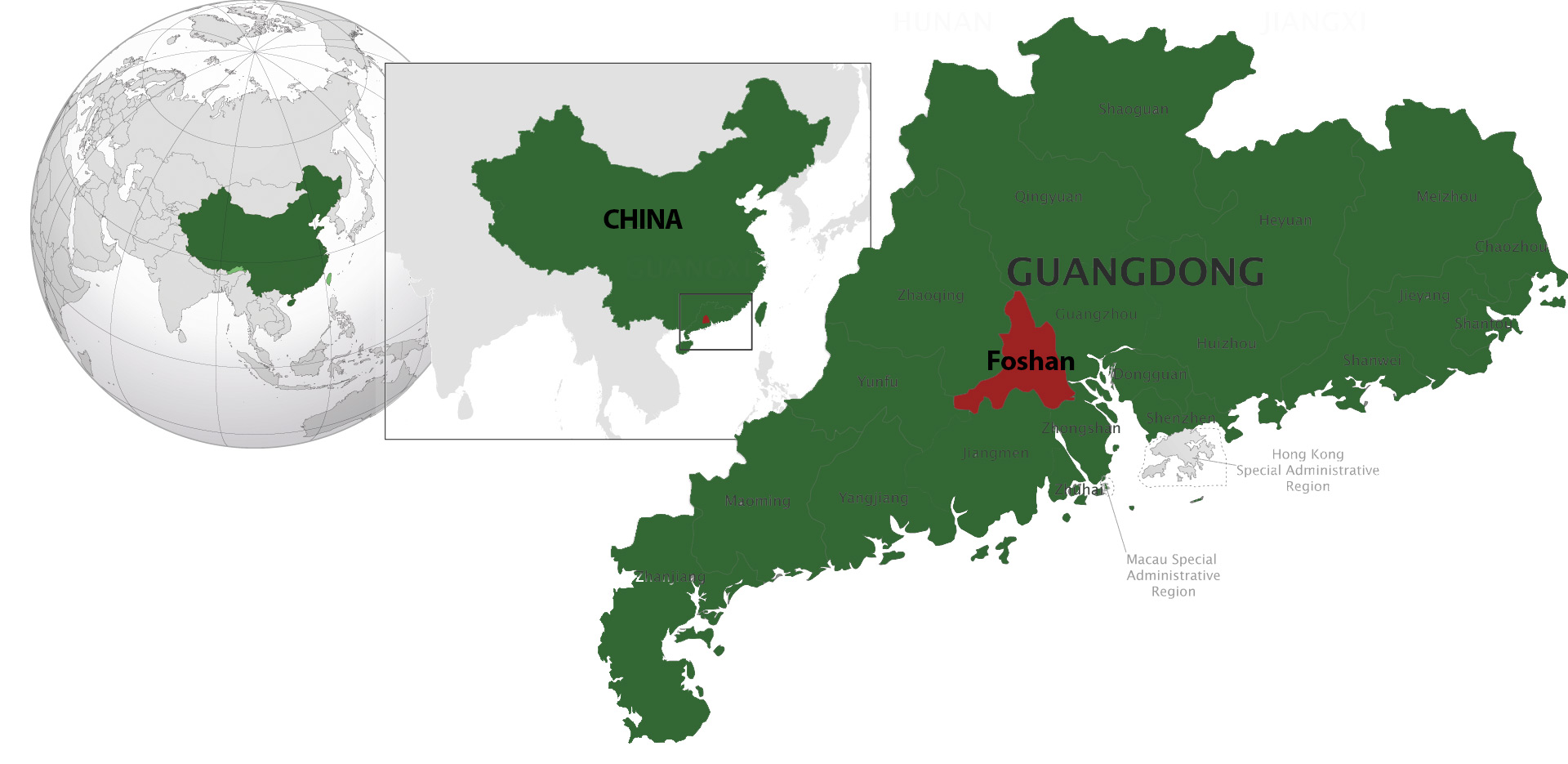
The outbreak has affected at least 12 cities across southern Guangdong Province, with Foshan reporting the highest concentration of cases. Guangzhou, China’s third-largest city and a major international gateway, has confirmed significant community transmission. The outbreak has also reached Shenzhen, one of China’s most important business centers and a key destination for international travelers.
Chinese authorities have implemented COVID-19-style response measures, including mass testing campaigns, neighborhood-level lockdowns, and extensive mosquito control operations. Teams are conducting door-to-door health screenings in affected communities, while health workers spray insecticides throughout residential areas, parks, and commercial districts.
The economic implications extend beyond public health concerns. Several international conferences scheduled for Guangzhou and Shenzhen have been postponed, while some multinational corporations have restricted employee travel to the region. Tourism operators report significant cancellations for autumn travel packages that typically focus on Guangdong’s cultural attractions and manufacturing centers.
Environmental Factors Contributing to the Outbreak
 Aedes aegypti mosquito. Image credit: Amy E. Lockwood, MS / CDC.
Aedes aegypti mosquito. Image credit: Amy E. Lockwood, MS / CDC. Aedes albopictus mosquito. Image credit: James D Gathany / CDC.
Aedes albopictus mosquito. Image credit: James D Gathany / CDC.
The 2025 monsoon season brought record rainfall to southern China, creating unprecedented mosquito breeding opportunities. Urban drainage systems in rapidly developing cities like Foshan and Dongguan became overwhelmed, leading to persistent standing water in residential neighborhoods, construction sites, and industrial areas.
Climate scientists note that rising temperatures have expanded the geographic range where Aedes mosquitoes can survive and reproduce. Areas of Guangdong Province that previously experienced only seasonal mosquito activity now support year-round populations. This environmental shift makes sustained chikungunya transmission possible in regions where it was previously considered unlikely.
The outbreak coincides with China’s continued urbanization, which has created numerous microenvironments favorable to mosquito breeding. High-density residential developments often feature decorative water elements, rooftop gardens, and drainage systems that inadvertently provide breeding sites. Construction activities generate temporary water collection points in building materials and excavation sites.
Chikungunya Virus: Medical Background and Transmission Dynamics
Chikungunya virus belongs to the alphavirus genus and was first identified during an outbreak in Tanzania in 1952. The name derives from the Kimakonde language, meaning “to become contorted,” which describes the bent posture adopted by patients experiencing severe joint pain. The virus has caused major outbreaks across Africa, Asia, and the Americas over the past several decades, but China’s current situation represents the largest outbreak in East Asia in recent history.
The virus is transmitted exclusively through the bite of infected Aedes mosquitoes, primarily Aedes aegypti and Aedes albopictus. These species are daytime feeders, which distinguishes chikungunya transmission patterns from malaria and other mosquito-borne diseases that involve evening-active vectors. The mosquitoes become infected when they feed on a person during the viremic period, typically the first week of illness when virus levels in the blood are highest.
Chikungunya Symptom Timeline and Severity Guide

Timeline | Symptoms | Severity | Treatment Focus |
|---|---|---|---|
Days 1-3 | High fever (39-40°C), sudden joint pain onset, severe headache | Severe | Fever control, pain management, hydration |
Days 4-7 | Continued fever, peak joint pain, possible skin rash, muscle aches | Severe to Moderate | Supportive care, activity restriction |
Week 2-3 | Fever resolves, persistent joint stiffness, fatigue | Moderate | Gentle movement, continued pain relief |
Months 1-3 | Joint pain fluctuation, morning stiffness, activity limitation | Mild to Moderate | Physical therapy, anti-inflammatory treatment |
3+ Months | Chronic arthritis-like symptoms (30-60% of patients) | Variable | Long-term management, specialist care |
Primary Symptoms (Days 1-7)
The initial symptoms appear suddenly and can be severe. The onset is often so sudden that patients can pinpoint the exact moment they began feeling unwell. This rapid progression distinguishes chikungunya from many other travel-related illnesses that develop more gradually.
The hallmark symptom is severe joint pain, which affects multiple joints simultaneously and can be excruciating. Patients frequently describe the pain as unlike anything they have previously experienced. The pain typically affects small joints in the hands and feet most severely, but large joints including knees, ankles, and shoulders are also commonly involved. The joint pain is often accompanied by visible swelling and stiffness that significantly impairs mobility.
Fever is nearly universal in acute chikungunya infection, often reaching 39°C to 40°C (102°F to 104°F). The fever pattern is typically sustained rather than intermittent, and patients often experience chills and intense sweating. Headache is another prominent symptom, often described as severe and throbbing, affecting the entire head rather than localizing to specific regions.
A characteristic skin rash develops in approximately 40-50% of patients, usually appearing three to five days after fever onset. The rash typically begins on the trunk and spreads to the extremities and face. It consists of small, flat red spots that may merge into larger areas of redness. The rash is usually not itchy but can be accompanied by increased skin sensitivity.
Many patients also experience significant muscle pain throughout the body, often described as feeling like intense exercise soreness without the preceding physical activity. This myalgia can be severe enough to interfere with basic activities like walking or climbing stairs. Fatigue is profound and can persist for weeks beyond the resolution of other acute symptoms.
Long-term Health Consequences
The chronic phase of chikungunya infection represents one of the most concerning aspects of the disease for travelers. Studies indicate that 30-60% of patients develop persistent joint symptoms that can last for months or even years after the initial infection. This chronic arthritis-like condition can significantly impact quality of life and work productivity.
The likelihood of developing chronic symptoms increases with age, with patients over 45 years old at highest risk for persistent joint problems. Pre-existing joint conditions such as arthritis also predispose patients to more severe and prolonged symptoms. Women appear to be at higher risk than men for developing chronic chikungunya arthritis.
The chronic joint symptoms typically affect the same joints that were involved during the acute illness. Patients describe persistent pain, stiffness, and swelling that waxes and wanes over time. The symptoms are often worse in the morning and improve with gentle movement, similar to rheumatoid arthritis. Some patients require ongoing treatment with anti-inflammatory medications or physical therapy.
Research suggests that the chronic symptoms result from persistent immune system activation rather than ongoing viral replication. This immune-mediated inflammation can be triggered by stress, other illnesses, or changes in weather patterns. Some patients report symptom flares during travel, possibly related to changes in climate, activity levels, or sleep patterns.
Prevention Strategies: Comprehensive Mosquito Control
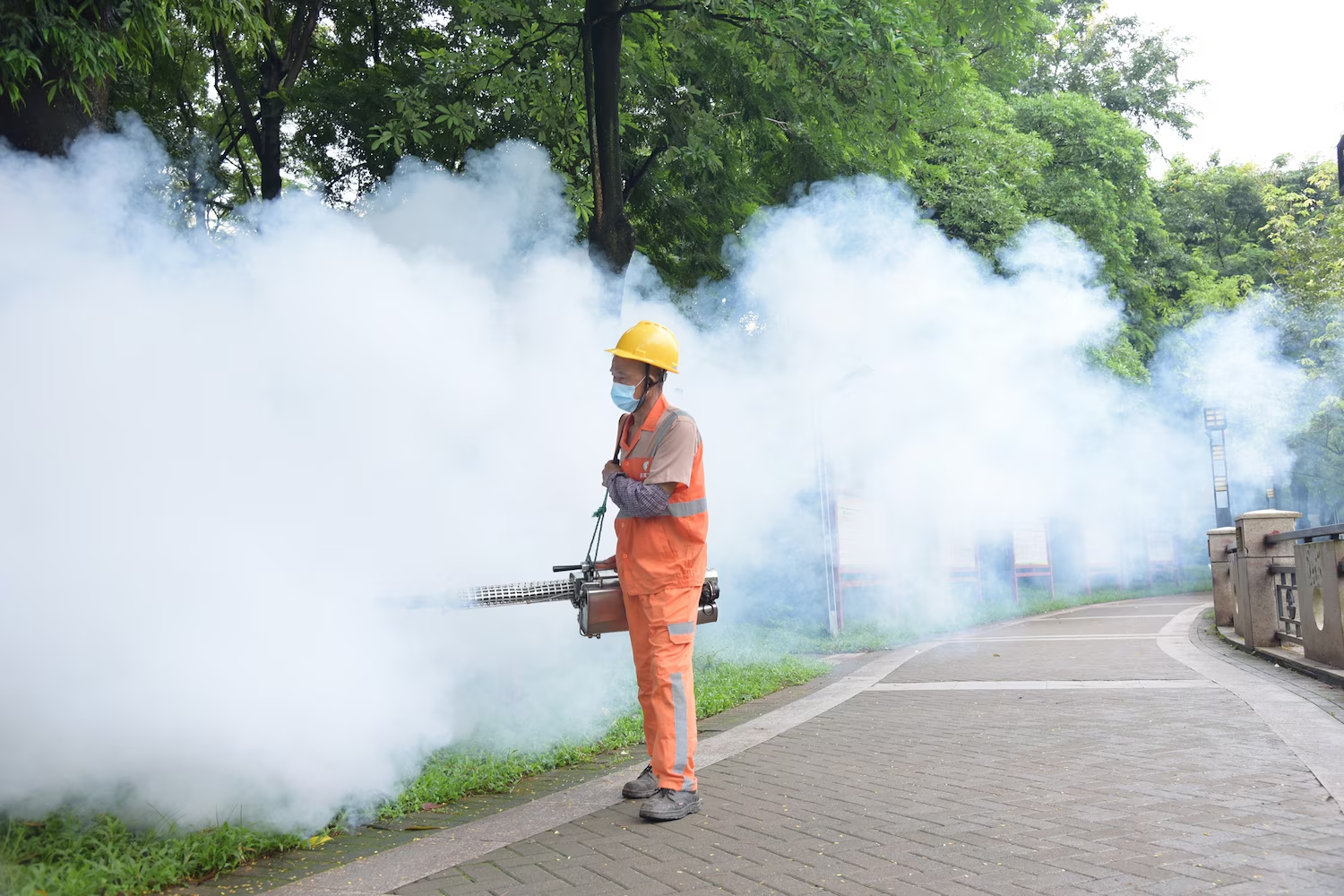
VCG via Getty Images
Preventing chikungunya infection requires a multi-layered approach focused on avoiding mosquito bites throughout the day. Unlike malaria prevention, which can rely primarily on evening and nighttime protection measures, chikungunya prevention requires constant vigilance during daylight hours when Aedes mosquitoes are most active.
Insect Repellent Effectiveness Comparison
Repellent Type | DEET 20-30% | Picaridin 20% | Oil of Lemon Eucalyptus | Permethrin (Clothing) |
|---|---|---|---|---|
Protection Duration | 4-6 hours | 6-8 hours | 2-3 hours | Through multiple washes |
Effectiveness vs Aedes | Excellent | Excellent | Good | Excellent (kills on contact) |
Skin Sensitivity | Moderate | Low | Low-Moderate | Not for direct skin use |
Fabric/Plastic Safety | Can damage synthetics | Safe for materials | Safe for materials | Safe for fabrics |
Reapplication Frequency | Every 2-3 hours in humid conditions | Every 4-6 hours | Every 1-2 hours | Pre-treatment only |
Availability in China | Widely available | Moderate availability | Limited availability | Available in outdoor stores |
Personal Protective Measures
Insect repellent selection represents the foundation of personal protection against chikungunya. The choice of repellent significantly impacts protection effectiveness and practical usability during travel activities.
Clothing selection plays a crucial role in bite prevention. Long-sleeved shirts and full-length pants provide physical barriers against mosquito bites, but fabric choice matters significantly. Tightly woven fabrics offer better protection than loose weaves, while lighter colors are less attractive to mosquitoes than dark colors. Synthetic athletic fabrics that wick moisture away from the skin can help maintain comfort in hot, humid conditions while providing protection.
Permethrin-treated clothing offers an additional layer of protection that persists through multiple wash cycles. Travelers can purchase pre-treated garments or treat their own clothing with permethrin sprays before departure. This treatment not only repels mosquitoes but also kills those that land on treated fabric, providing protection even if repellent wears off exposed skin areas.
Environmental Modifications and Accommodation Strategies
Accommodation selection significantly influences mosquito exposure risk during travel. Air-conditioned rooms with well-sealed windows and doors provide the most reliable protection, as mosquitoes are weak fliers that struggle in moving air and prefer outdoor environments. However, not all air conditioning systems are equally effective at preventing mosquito entry.
When evaluating accommodations, travelers should look for rooms on higher floors, as mosquitoes tend to concentrate at ground level and have difficulty flying against wind currents at elevated heights. Rooms facing away from gardens, pools, or other water features reduce proximity to mosquito breeding and resting sites.
Even in air-conditioned accommodations, brief mosquito entry can occur when doors open for housekeeping, food delivery, or guest movement. Travelers should inspect rooms upon arrival and throughout their stay, using a flashlight to check behind furniture, in closets, and other dark areas where mosquitoes rest during daylight hours.
Room preparation involves eliminating any standing water sources that could support mosquito breeding. This includes emptying decorative vases, checking for plumbing leaks, ensuring proper drainage in bathrooms and balcony areas, and removing any containers that could collect water from air conditioning condensation or rainfall.
Activity-Based Risk Management
Different types of travel activities carry varying levels of mosquito exposure risk. Outdoor sightseeing during peak mosquito activity periods (early morning and late afternoon) presents the highest risk, particularly in areas with vegetation or water features. Indoor cultural activities like museum visits or shopping in air-conditioned environments carry minimal risk.
Urban exploration often involves exposure to mosquito breeding sites in construction areas, street markets, and older neighborhoods with poor drainage. Travelers should plan routes to minimize time spent in high-risk areas and carry repellent for immediate reapplication when entering mosquito-dense environments.
Dining choices significantly impact exposure risk. Outdoor restaurants and street food vendors often operate in areas attractive to mosquitoes, particularly those with poor sanitation or nearby standing water. Indoor dining in well-maintained, air-conditioned establishments provides much safer options for meals during high-risk periods.
Photography and recreational activities in parks, gardens, and natural areas require special attention to protection measures. These environments often combine multiple risk factors including vegetation for mosquito resting, water features for breeding, and extended outdoor exposure during prime mosquito activity hours.
Vaccination Considerations and Medical Preparedness
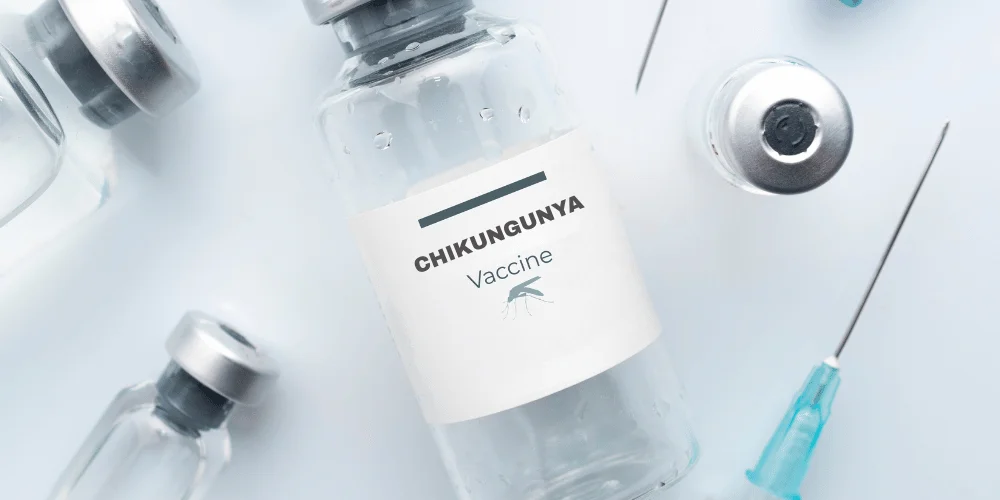
The development and licensing of chikungunya vaccines represents a significant advancement in travel medicine, providing travelers with additional protection options beyond traditional mosquito avoidance measures. However, vaccine availability, timing requirements, and individual risk factors all influence vaccination decisions for China travel.
Available Chikungunya Vaccines: Comparison Guide
Vaccine | IXCHIQ | VIMKUNYA |
|---|---|---|
License Date | November 2023 | February 2025 |
Vaccine Type | Live-attenuated virus | Virus-like particle |
Age Range | 18-64 years | 12+ years |
Efficacy Rate | ~90% protective antibodies | Similar to IXCHIQ |
Contraindications | Pregnancy, immunocompromised, 65+ | Pregnancy, severe immunocompromise |
Immune Response Time | 28 days | 2-4 weeks |
Suitable for Mild Immunocompromise | No | Yes (with consultation) |
Travel Clinic Availability | Limited supply | Increasing availability |
IXCHIQ Vaccine: First-Generation Protection
The IXCHIQ vaccine uses a live-attenuated virus approach similar to yellow fever vaccination. Clinical trials demonstrated strong immune responses in healthy adults, with protective antibody levels developing in approximately 90% of recipients within 28 days of vaccination.
The live-virus nature of IXCHIQ requires careful screening for contraindications. Age restrictions limit use to adults 18-64 years old, reflecting safety concerns identified during clinical trials where older adults showed increased rates of adverse reactions.
VIMKUNYA: Expanded Age Coverage
The February 2025 licensing of VIMKUNYA expanded vaccination options to include adolescents and adults 12 years and older. This virus-like particle vaccine uses different technology that allows safer use in broader populations, including some immunocompromised individuals with specialist consultation.
Vaccination Timing and Travel Planning
Both vaccines require advance planning, as protective immunity develops over 2-4 weeks following vaccination. International travel clinics report high demand and limited vaccine supplies, with appointment availability often extending 4-6 weeks from initial contact. Travelers should initiate vaccination consultations immediately upon deciding to visit affected areas of China.
Travel medicine specialists recommend completing vaccination at least 30 days before departure to ensure adequate immune response development and identify any adverse reactions that might affect travel plans. Some individuals experience mild fever, fatigue, or injection site reactions that could interfere with pre-travel preparations if vaccination occurs too close to departure dates.
Cost considerations vary significantly depending on insurance coverage and healthcare setting. Many insurance plans do not cover travel vaccines, making out-of-pocket costs relevant for travel budgeting. Vaccine prices typically range from $300-500 per dose, though some travel clinics offer package deals that include consultation and other recommended vaccinations.
Treatment Options and Medical Care Access

Currently, no specific antiviral medications exist for chikungunya treatment, making supportive care the primary therapeutic approach. However, early recognition and appropriate symptom management can significantly improve patient comfort and potentially reduce the risk of chronic complications.
Acute Phase Management
Pain management represents the most challenging aspect of chikungunya treatment, as the joint pain can be severe enough to interfere with basic daily activities. Acetaminophen (paracetamol) serves as the first-line treatment for both pain and fever control. Regular dosing rather than as-needed administration often provides better symptom control during the acute phase.
Aspirin and other nonsteroidal anti-inflammatory drugs (NSAIDs) should be avoided until dengue fever has been definitively ruled out, as these medications increase bleeding risks in dengue patients. This restriction can complicate pain management, as NSAIDs are often more effective than acetaminophen for joint pain control.
Hydration management becomes crucial, particularly in hot climates where fever, sweating, and potential gastrointestinal symptoms can lead to rapid dehydration. Oral rehydration solutions provide better electrolyte balance than plain water, while severe cases may require intravenous fluid administration.
Rest and activity modification help manage symptoms and may reduce the risk of chronic complications. Complete bed rest is not necessary, but patients should avoid strenuous activities and listen to their body’s signals regarding activity tolerance. Gentle movement and range-of-motion exercises may help maintain joint function without exacerbating inflammation.
Healthcare System Navigation in China
China’s healthcare system offers excellent medical care in major urban centers, though language barriers and system differences can complicate treatment for international travelers. International hospitals in Beijing, Shanghai, and Guangzhou provide English-speaking medical staff and familiar treatment approaches, but these facilities may not be available in smaller cities within Guangdong Province.
Chinese public hospitals generally provide high-quality medical care at lower costs than international facilities, but navigating the system requires understanding of local procedures and often involves significant language challenges. Many public hospitals have international departments or English-speaking staff, though availability varies by location and time of day.
Medication availability in China is generally excellent, with acetaminophen widely available under various brand names including Tylenol and local generic formulations. However, travelers should carry adequate supplies of any prescription medications, as specific brands or formulations may not be readily available.
Emergency medical services in major Chinese cities are sophisticated and rapid, though communication in emergency situations can be challenging for non-Chinese speakers. Travelers should carry emergency contact cards with key phrases translated into Chinese and ensure their travel insurance provides 24-hour multilingual assistance services.
Regional Risk Assessment and Travel Planning
Understanding the geographic distribution of chikungunya Virus in China enables travelers to make informed itinerary decisions that balance cultural experiences with health protection. Risk levels vary significantly between different regions and urban versus rural environments.
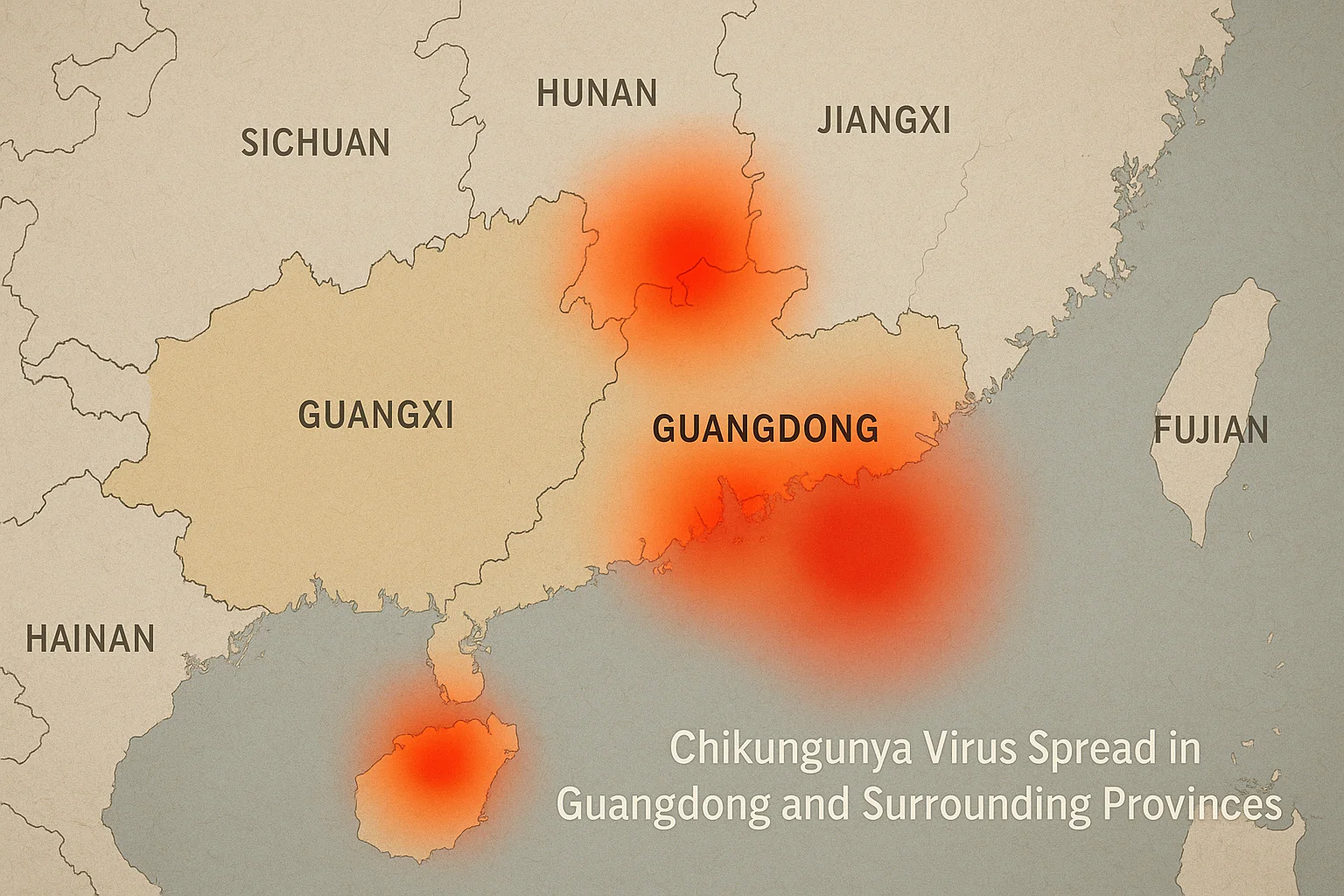
China Travel Risk Assessment by Destination
Destination | Current Risk Level | Outbreak Status | Tourist Attractions | Recommendations |
|---|---|---|---|---|
Guangdong Province | ||||
– Foshan | Very High | Highest case concentration | Ancestral Temple, Nanfeng Kiln | Avoid non-essential travel |
– Guangzhou | High | Active transmission | Canton Tower, Chen Clan Academy | Enhanced precautions required |
– Shenzhen | High | Community spread | Window of the World, OCT East | Business travel only with precautions |
– Dongguan | Moderate-High | Limited cases | Keyuan Garden, Yinxian Resort | Consider postponing |
Low-Risk Alternatives | ||||
– Beijing | Minimal | No cases reported | Forbidden City, Great Wall | Safe for travel |
– Shanghai | Minimal | No cases reported | The Bund, Yu Garden | Safe with standard precautions |
– Xi’an | Minimal | No cases reported | Terracotta Warriors | Excellent alternative destination |
– Chengdu | Minimal | No cases reported | Giant Panda Base, Jinli Street | Safe for travel |
– Tibet/Xinjiang | None | Unsuitable climate for vectors | Potala Palace, Heavenly Lake | No mosquito-borne disease risk |
High-Risk Areas: Guangdong Province Details
Guangdong Province encompasses several major tourist destinations that are currently experiencing active chikungunya transmission. The province’s subtropical climate and urban development patterns create ideal conditions for mosquito breeding and virus spread.
The city’s urban heat island effect, combined with extensive water features and high population density, creates ideal conditions for Aedes mosquito breeding and virus transmission. Tourist areas around Shamian Island and the historic city center present particular risks due to older drainage systems and numerous decorative water elements.
Shenzhen’s position as a major business center means many travelers cannot easily avoid the city despite health risks. The city’s rapid development has created numerous construction sites with standing water, while its subtropical climate supports year-round mosquito populations. Business travelers should focus on staying in newer, well-maintained hotels with effective air conditioning and mosquito control measures.
Foshan, while less frequented by international tourists, attracts visitors interested in traditional Chinese culture and martial arts. The city’s famous Ancestral Temple complex and surrounding historical areas feature traditional architecture with ornamental ponds and gardens that increase mosquito exposure risks.
Moderate-Risk Adjacent Areas
Cities in neighboring provinces may experience spillover transmission as infected travelers move throughout the region. Hong Kong and Macau, while maintaining separate health systems from mainland China, share similar climate conditions and mosquito populations that could support chikungunya transmission.
Fujian Province, located directly north of Guangdong, has similar subtropical climate conditions during summer months. While no current outbreak has been reported, the environmental conditions could support virus transmission if introduced by infected travelers or mosquitoes.
Low-Risk Alternative Destinations
Northern China offers compelling alternatives for travelers concerned about chikungunya exposure. Beijing’s rich history, cultural attractions, and cooler climate make it an excellent substitute for southern destinations. The city’s latitude and continental climate create conditions unsuitable for tropical Aedes mosquito populations, particularly during autumn and winter months.
Xi’an provides access to some of China’s most important historical sites, including the Terracotta Warriors, while maintaining minimal mosquito-borne disease risk. The city’s inland location and semi-arid climate do not support the standing water and humidity requirements for intensive Aedes mosquito breeding.
Shanghai combines modern urban experiences with traditional Chinese culture while maintaining better mosquito control than cities in Guangdong Province. The city’s extensive investment in public health infrastructure and pest control programs provides additional protection layers beyond climate factors.
High-altitude destinations including Tibet, western Xinjiang, and mountainous areas of Sichuan Province present virtually no chikungunya risk due to environmental conditions incompatible with tropical mosquito species. These regions offer unique cultural experiences and stunning natural landscapes while avoiding health risks associated with the current outbreak.
Travel Insurance and Risk Management
The chikungunya outbreak has created complex travel insurance considerations that require careful policy review and potentially additional coverage acquisition. Standard travel insurance policies may not adequately cover tropical disease treatment or may exclude coverage in areas with active health advisories.

Travel Insurance Coverage Requirements
Coverage Type | Minimum Recommended | Why Important | Special Considerations |
|---|---|---|---|
Medical Coverage | $100,000 | Covers hospitalization and treatment costs | Higher limits for pre-existing conditions |
Medical Evacuation | $250,000 | Emergency transport to adequate medical facilities | Must include repatriation for ongoing care |
Trip Cancellation | Trip cost value | Covers cancellation due to illness or advisories | Check if covers government travel warnings |
Emergency Assistance | 24/7 multilingual | Helps navigate foreign healthcare systems | Verify coverage in outbreak areas |
Prescription Coverage | $5,000-10,000 | Covers emergency medication needs abroad | Important for chronic symptom management |
Pre-existing Conditions | As needed | Covers complications related to existing health issues | Must declare at time of purchase |
Coverage Evaluation and Policy Selection
Medical coverage limits become particularly important given the potential for prolonged illness and chronic complications from chikungunya infection. The unpredictable nature of symptoms and potential need for specialized care make comprehensive coverage essential.
Medical evacuation coverage takes on increased importance during disease outbreaks, as local medical facilities may become overwhelmed or travelers may prefer treatment in more familiar healthcare systems. Evacuation coverage should include both emergency medical transport and repatriation for ongoing treatment, with minimum coverage of $250,000 for Asian evacuations.
Pre-existing condition coverage requires careful consideration, particularly for travelers with arthritis, joint problems, or immune system disorders that could complicate chikungunya infection. Some policies exclude coverage for complications related to pre-existing conditions, while others provide coverage if conditions are stable and declared at the time of policy purchase.
Trip cancellation and interruption coverage may become relevant if health conditions deteriorate or if government advisories change to recommend against travel. Policies should cover cancellation for medical reasons as well as official government recommendations against travel to specific destinations.
Claims Documentation and Medical Records
International medical treatment requires thorough documentation for insurance claims processing. Travelers should obtain detailed medical records, including diagnostic test results, treatment notes, and discharge summaries translated into English when possible.
Prescription medication documentation becomes important for both customs clearance and insurance reimbursement. Travelers should carry original prescription bottles, physician letters describing medical necessity, and generic drug name translations to facilitate pharmacy access abroad.
Emergency contact information should include not only insurance company details but also policy numbers, pre-authorization requirements, and direct billing arrangements with international hospitals. Many insurance companies provide mobile apps or wallet cards with essential information for emergency situations.
Long-term Health Impact and Recovery Planning

Chikungunya infection can significantly impact travelers’ lives long after their return home, making it important to understand potential long-term consequences and plan for ongoing medical care. The chronic arthritis-like symptoms that affect 30-60% of patients represent a particular concern for active travelers and working professionals.
Chronic Symptom Patterns and Management
Chronic chikungunya arthritis typically affects the same joints involved during acute illness, with hand, wrist, ankle, and knee involvement most common. Symptoms often fluctuate in intensity, with patients experiencing good days and bad days that can be unpredictable and frustrating.
Morning stiffness is characteristic of chronic chikungunya arthritis, often lasting 30-60 minutes after waking. Patients describe joint stiffness and pain that improves with gentle movement but worsens with inactivity. This pattern can interfere with work productivity and recreational activities for months or years following infection.
Weather sensitivity affects many chronic chikungunya patients, with symptoms worsening during cold, damp weather or barometric pressure changes. This sensitivity can impact travel plans and residential decisions, as some patients relocate to warmer, drier climates to manage symptoms.
Treatment for chronic chikungunya arthritis involves a combination of anti-inflammatory medications, physical therapy, and lifestyle modifications. Some patients benefit from disease-modifying antirheumatic drugs (DMARDs) similar to those used for rheumatoid arthritis, though evidence for effectiveness remains limited.
Psychological and Social Impact
The unpredictable nature of chronic chikungunya symptoms can lead to anxiety, depression, and social isolation. Patients often struggle with uncertainty about symptom duration and treatment effectiveness, particularly when dealing with a relatively uncommon condition that many healthcare providers have limited experience treating.
Work-related challenges arise when chronic pain interferes with job performance or attendance. Some patients require workplace accommodations, modified duties, or extended medical leave during severe symptom flares. Career impacts can be particularly significant for individuals in physically demanding occupations.
Social relationships may be strained by chronic pain and fatigue, as family and friends may not understand the invisible nature of ongoing symptoms. Support groups and counseling services can provide valuable assistance for patients adapting to chronic health challenges.
Practical Implementation: Step-by-Step Travel Preparation
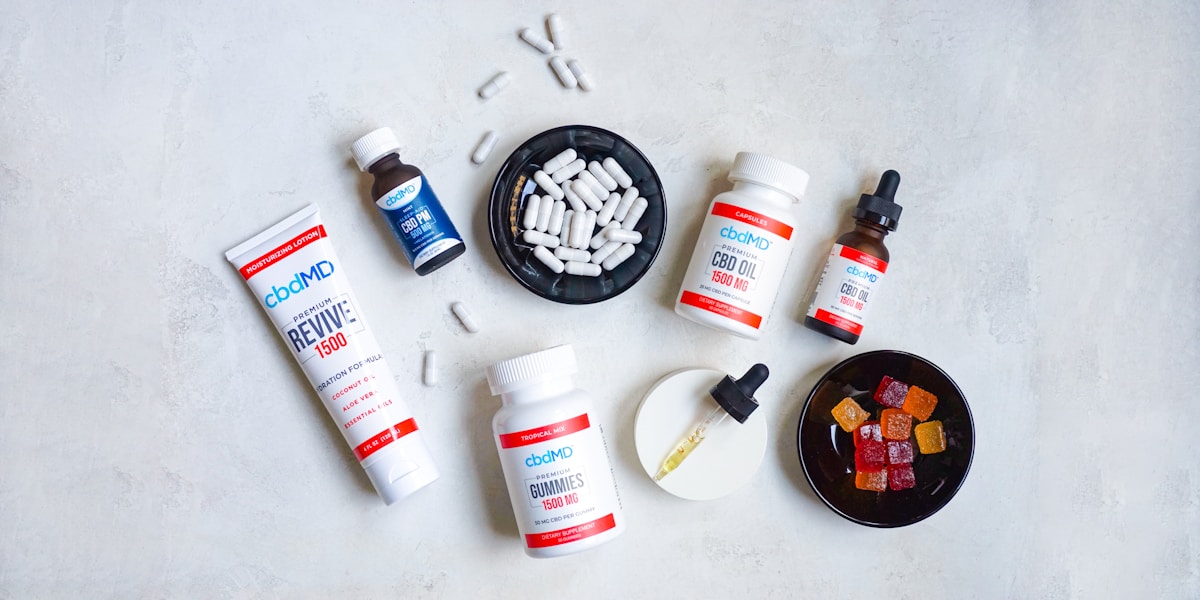
Successful chikungunya prevention requires systematic preparation beginning weeks before departure and continuing throughout the travel period. Our recommended approach balances thorough preparation with practical feasibility for busy travelers.
Initial Planning Phase (8-12 Weeks Before Travel)
Travel medicine consultation should be scheduled as soon as China travel plans are confirmed, as vaccine availability and appointment scheduling can extend timeline requirements. Consultation goals include risk assessment, vaccination recommendations, and development of personalized prevention strategies based on individual health status and travel itinerary.
Itinerary review with health considerations in mind may identify opportunities to reduce risk through timing adjustments, destination modifications, or activity changes. For example, indoor cultural activities during peak mosquito hours can replace outdoor sightseeing, while alternative destinations may provide similar experiences with lower health risks.
Travel insurance evaluation and purchase should occur during initial planning stages, as some policies require purchase within specific timeframes of initial trip booking to provide maximum coverage benefits. Pre-existing condition coverage, in particular, often requires early purchase to be effective.
Pre-departure Preparation (2-4 Weeks Before Travel)
Vaccination completion should occur at least 30 days before departure to ensure adequate immune response development. Travelers should monitor for adverse reactions and maintain vaccination documentation for customs and medical care purposes abroad.
Prevention supply acquisition includes insect repellent, protective clothing, and other mosquito control items. Travelers should test repellent products before departure to identify any skin sensitivities and ensure adequate supply for the entire trip duration.
Accommodation verification involves confirming air conditioning functionality, mosquito control measures, and room features that may affect exposure risk. Direct communication with hotels about specific health concerns can help ensure appropriate room assignment and facility preparation.
Medical preparation includes acquiring adequate medication supplies, obtaining physician letters for prescription medications, and identifying healthcare resources at destination locations. Emergency contact information should be compiled and distributed to family members and travel companions.
During Travel Implementation
Daily prevention routines should be established from arrival and maintained consistently throughout the travel period. This includes morning repellent application, appropriate clothing selection, and regular reapplication based on activity levels and environmental conditions.
Symptom monitoring involves daily self-assessment for fever, joint pain, headache, and other chikungunya symptoms. Early recognition enables prompt medical attention and may improve treatment outcomes while reducing transmission risk to others.
Activity modification based on daily risk assessment allows travelers to adjust plans based on weather conditions, mosquito activity levels, and personal risk tolerance. Flexibility in scheduling enables response to changing conditions while maintaining travel enjoyment.
FAQs: Chikungunya Virus in China
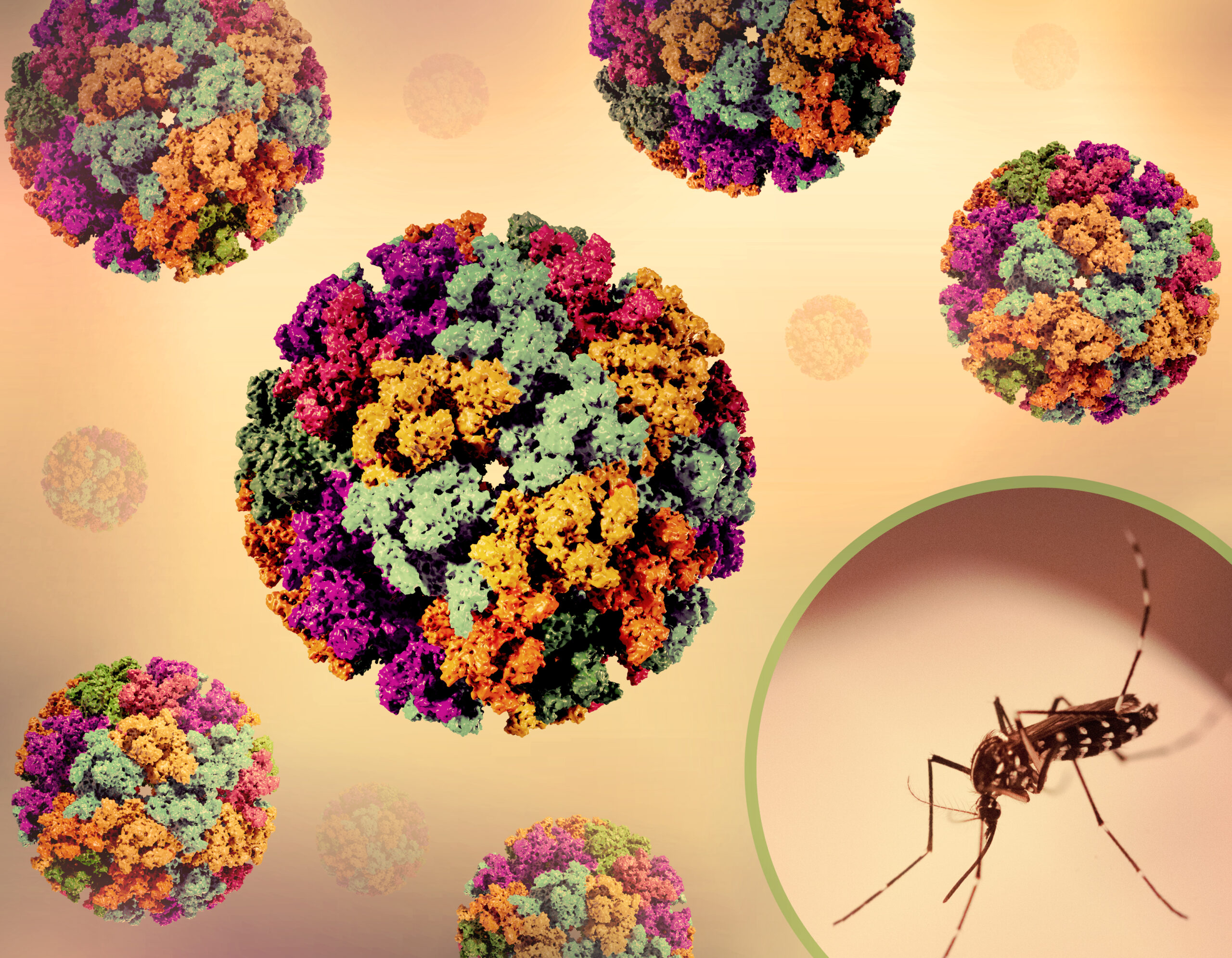
How does chikungunya compare to other mosquito-borne diseases in China?
Chikungunya represents a new addition to China’s mosquito-borne disease profile, joining dengue fever as tropical diseases transmitted by Aedes mosquitoes in urban environments. Unlike malaria, which is transmitted by evening-active Anopheles mosquitoes and remains rare in major Chinese cities, chikungunya spreads through daytime-active mosquitoes common in urban areas.
The joint pain characteristic of chikungunya distinguishes it clinically from dengue fever, which more commonly causes bleeding complications and severe plasma leakage. However, both diseases can cause high fever, headache, and muscle pain, making clinical differentiation challenging without laboratory testing.
Japanese encephalitis, another mosquito-borne disease present in China, involves different mosquito species and primarily affects rural areas rather than urban centers. The seasonal pattern and geographic distribution of Japanese encephalitis differ significantly from chikungunya, though travelers should be aware of multiple mosquito-borne disease risks depending on their specific destinations and activities.
What should travelers do if they develop symptoms after returning home?
Post-travel symptom development requires immediate medical attention, particularly if symptoms include fever, joint pain, headache, or rash within two weeks of return from affected areas. Travelers should contact healthcare providers before arriving at medical facilities to allow for appropriate infection control preparation.
Detailed travel history documentation helps healthcare providers make accurate diagnoses and implement appropriate treatment strategies. Information should include specific destinations visited, dates of travel, accommodation types, activities performed, and prevention measures used during travel.
Diagnostic testing may be necessary to distinguish chikungunya from other travel-related illnesses with similar presentations. Healthcare providers may order blood tests to detect chikungunya virus, antibodies, or other pathogens depending on clinical presentation and travel history.
Isolation may be recommended during the acute phase to prevent local transmission if competent mosquito vectors are present in the home area. While person-to-person transmission does not occur, infected travelers can potentially establish new transmission cycles if bitten by local Aedes mosquitoes.
Can travelers with pre-existing health conditions safely visit China during the outbreak?
Pre-existing health condition assessment requires individual evaluation by qualified healthcare providers familiar with both the medical conditions and current outbreak situation. Certain conditions may increase risks for severe complications or interfere with prevention strategies.
Immunocompromised travelers face increased risks for severe chikungunya infection and may be unable to receive live-virus vaccines. Alternative prevention strategies become more important for these travelers, potentially including destination changes or trip postponement.
Joint disease patients may experience more severe and prolonged symptoms if infected with chikungunya virus. Pre-existing arthritis, in particular, appears to predispose patients to chronic chikungunya arthritis that can significantly impact quality of life.
Pregnancy considerations include inability to receive available vaccines and potential risks to maternal and fetal health from chikungunya infection. Pregnant travelers should strongly consider postponing travel to affected areas or choosing alternative destinations.
Making Informed Decisions About China Travel
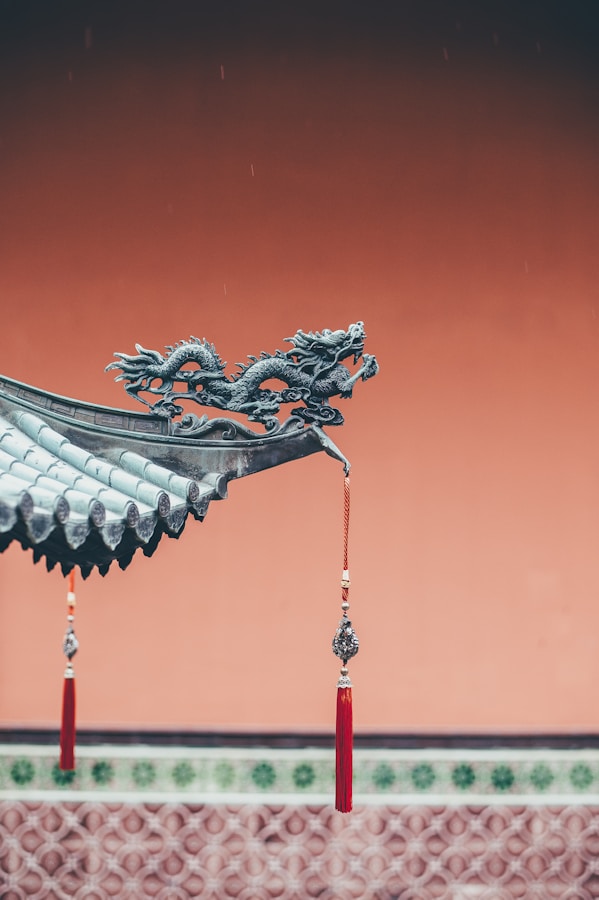
The current chikungunya outbreak in China represents a significant but manageable health risk for informed travelers who implement appropriate prevention strategies. The situation requires balancing legitimate health concerns against travel goals and cultural experiences that may be difficult to replicate elsewhere.
Risk tolerance varies among individuals based on health status, age, travel experience, and personal circumstances. Business travelers may face different risk-benefit calculations than leisure tourists, while family travelers must consider risks to multiple family members with varying vulnerability levels.
Timing flexibility can significantly impact risk levels, as seasonal mosquito activity patterns and outbreak evolution may improve conditions over time. Travelers with flexible schedules might consider postponing trips to affected areas until cooler months when mosquito activity naturally decreases.
Alternative destination considerations within China can provide similar cultural experiences with dramatically reduced health risks. Northern Chinese cities offer rich history and cultural immersion without current chikungunya transmission risks, while western regions provide unique experiences unavailable elsewhere in the world.
The decision to travel should ultimately be based on current, accurate information combined with individual risk assessment and appropriate medical consultation. We remain committed to providing updated guidance as the outbreak situation evolves and new prevention or treatment options become available.
China’s rich cultural heritage, economic importance, and natural beauty continue to attract millions of international visitors annually. While the current health situation requires enhanced precautions and careful planning, it need not prevent well-informed travelers from experiencing one of the world’s most fascinating destinations. The key lies in thorough preparation, appropriate prevention measures, and realistic understanding of risks and benefits involved in travel decisions during this dynamic situation.



